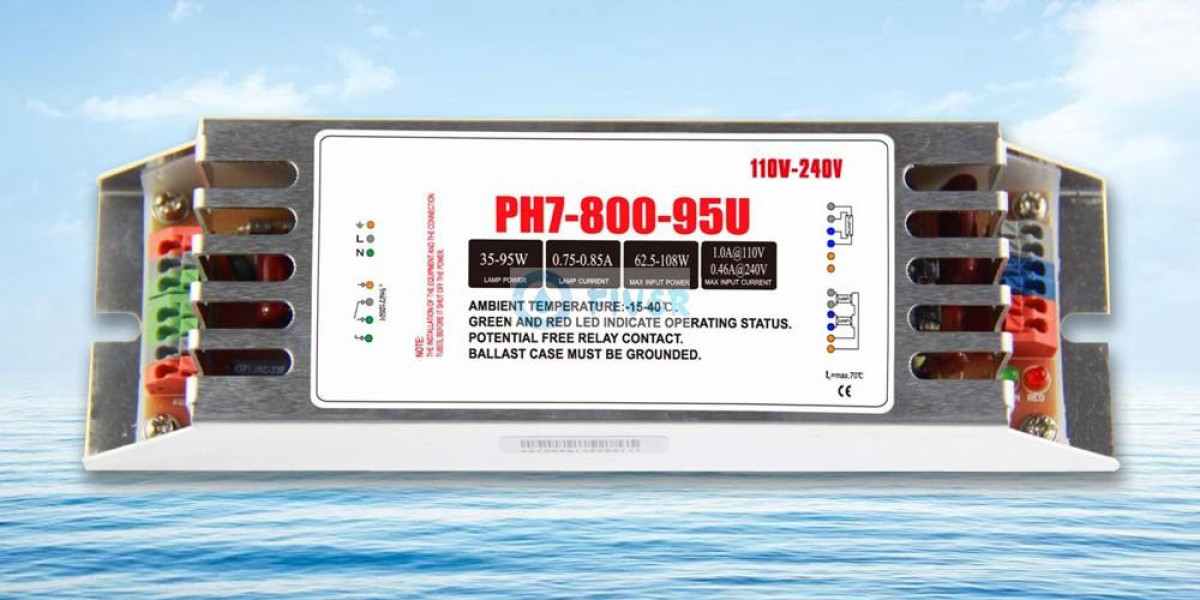A UV curing lamp is a high-intensity light source that emits ultraviolet (UV) light to quickly dry or cure coatings, adhesives, inks, and other materials. This technology is widely used in industries where speed and precision are crucial, such as printing, electronics, automotive, medical device manufacturing, and even nail salons. UV curing lamps offer a faster, cleaner, and more energy-efficient alternative to traditional curing methods that rely on heat or air drying.
In this blog, we’ll explore how UV curing lamps work, the different types available, their key applications, and the numerous benefits they offer in various industrial and commercial settings.
How Does a UV Curing Lamp Work?
A UV curing lamp works by emitting ultraviolet light within a specific wavelength range, typically between 200 nm and 400 nm. This light initiates a photochemical reaction in specially formulated materials (like UV-curable adhesives, inks, and coatings), causing them to harden or polymerize almost instantly.
This rapid curing process reduces production time significantly and improves the efficiency and quality of the final product. The three main types of UV wavelengths used in curing are:
UVA (315–400 nm) – Deep penetration, suitable for thicker layers.
UVB (280–315 nm) – Medium penetration.
UVC (200–280 nm) – Shallow penetration, good for surface curing.
The specific wavelength required depends on the chemical composition of the material being cured.
Types of UV Curing Lamps
There are two primary types of UV curing lamps, each with unique features and applications:
1. Mercury Vapor UV Lamps
These traditional UV curing lamps use mercury vapor inside a quartz tube to generate UV light when electrically charged. They provide high-intensity output and are effective for curing a wide range of materials.
Pros:
High UV output
Cost-effective
Suitable for large-scale curing systems
Cons:
Generate heat
Require warm-up time
Contain mercury (environmental concern)
2. UV LED Lamps
UV LED curing lamps use light-emitting diodes to produce UV radiation at specific wavelengths. These are gaining popularity due to their energy efficiency and long lifespan.
Pros:
Instant on/off (no warm-up time)
Energy-efficient
Long operational life (20,000+ hours)
Cooler operation (less heat)
Mercury-free and eco-friendly
Cons:
Higher initial cost
May require material reformulation for LED compatibility
Key Applications of UV Curing Lamps
UV curing lamps are used in a wide variety of industries due to their speed, efficiency, and environmental benefits. Here are some of the most common applications:
1. Printing Industry
UV curing is essential in digital and offset printing to dry UV inks and coatings instantly. It results in smudge-free prints with vibrant colors and high durability.
2. Electronics Manufacturing
UV curing is used to bond and encapsulate delicate electronic components. It provides precision curing without damaging heat-sensitive materials.
3. Automotive Industry
UV curing lamps are used to dry coatings, adhesives, and paints on car parts, trims, and interiors, improving production speed and finish quality.
4. Medical Devices
Medical device manufacturers use UV lamps to cure adhesives and coatings without using high temperatures, which could damage sensitive equipment.
5. Wood Finishing and Flooring
UV curing enables quick drying of protective coatings on wood, enhancing durability and appearance.
6. Cosmetic Industry (Nail Salons)
UV lamps are used in salons to cure gel nail polish, providing a hard, glossy finish within seconds.
Benefits of Using a UV Curing Lamp
Switching to UV curing technology offers multiple benefits across different industries:
1. Fast Curing Time
UV curing can take seconds instead of hours, significantly boosting production speed and reducing downtime.
2. Improved Product Quality
Cured materials exhibit greater hardness, resistance to chemicals, and scratch resistance, leading to longer-lasting products.
3. Energy Efficiency
Especially with UV LED lamps, energy consumption is significantly reduced compared to traditional heat drying methods.
4. Eco-Friendly Process
UV curing emits no VOCs (volatile organic compounds), making it a greener solution that helps companies comply with environmental regulations.
5. Compact Equipment
UV curing systems take up less space than traditional drying ovens or heat tunnels, which is beneficial for smaller workspaces.
6. Instant On/Off Operation
UV LED lamps offer immediate start and stop, which saves energy and extends the life of the equipment.
Choosing the Right UV Curing Lamp
When selecting a UV curing lamp for your application, several factors must be considered:
Material Compatibility: Ensure your inks, adhesives, or coatings are UV-curable and compatible with your lamp’s wavelength.
Wavelength Range: Choose a lamp that emits the appropriate UV spectrum for effective curing.
Intensity and Uniformity: For large-scale or high-precision applications, consistent and high-intensity UV output is essential.
Cooling Requirements: Depending on your environment, choose between air-cooled and water-cooled systems.
Lifespan and Maintenance: Consider the operating life, especially if you're running continuous production.
Maintenance and Safety Considerations
Like all industrial equipment, UV curing lamps require regular maintenance to perform at their best:
Clean lenses and reflectors regularly to avoid UV blockage.
Replace bulbs or LEDs when output decreases or lifespan ends.
Ensure proper shielding and ventilation to prevent UV exposure to skin and eyes.
Safety Tip: Always wear UV-protective eyewear and avoid direct exposure to UV light during operation.
Trends in UV Curing Lamp Technology
The UV curing industry is evolving rapidly, with several emerging trends:
Increased adoption of UV LED technology due to eco-friendliness and performance.
Integration with smart sensors and IoT-based controls for remote monitoring and automation.
Development of hybrid systems that combine traditional UV and LED for flexible performance.
Miniaturization of curing systems for use in compact or portable devices.
These innovations aim to make UV curing systems even more efficient, safe, and adaptable to modern industrial requirements.
Conclusion
A UV curing lamp is a game-changer in industries that demand speed, precision, and high-quality results. Whether you're in printing, electronics, automotive, or cosmetics, investing in the right UV curing system can significantly enhance productivity while lowering operational costs and environmental impact.
As UV LED technology continues to advance, expect even more efficient and eco-friendly options to become available. Now is the perfect time to explore how UV curing lamps can benefit your business and future-proof your operations.








